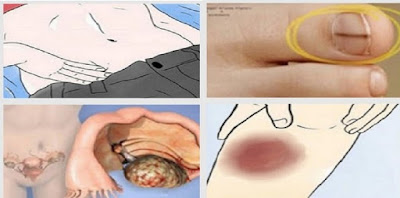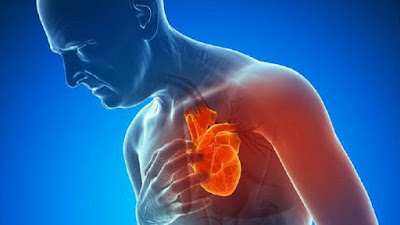20 Signs Of Cancer Ignored By Almost Everyone!
What Is Cancer?
Cancer can start any place in the body. It starts when cells grow out of control and crowd out normal cells. This makes it hard for the body to work the way it should. Cancer can be treated very well for many people. In fact, more people than ever before lead full lives after cancer treatment. Here we will explain what cancer is and how it?s treated. You?ll find a list of words about cancer and what they mean at the end of this booklet.
Cancer basics
Cancer is not just one disease. There are many types of cancer. It?s not just one disease. Cancer can start in the lungs, the breast, the colon, or even in the blood. Cancers are alike in some ways, but they are different in the ways they grow and spread.
How are cancers alike?
The cells in our bodies all have certain jobs to do. Normal cells divide in an orderly way. They die when they are worn out or damaged, and new cells take their place. Cancer is when the cells start to grow out of control. The cancer cells keep on growing and making new cells. They crowd out normal cells. This causes problems in the part of the body where the cancer started.
Cancer cells can also spread to other parts of the body. For instance, cancer cells in the lung can travel to the bones and grow there. When cancer cells spread, it?s called metastasis (meh-TAS-tuh-sis). When lung cancer spreads to the bones, it?s still called lung cancer. To doctors, the cancer cells in the bones look just like the ones from the lung. It?s not called bone cancer unless it started in the bones.
How are cancers different?
Some cancers grow and spread fast. Others grow more slowly. They also respond to treatment in different ways. Some types of cancer are best treated with surgery; others respond better to drugs called chemotherapy (key-mo-THER-uh-pee). Often 2 or more treatments are used to get the best results.
When someone has cancer, the doctor will want to find out what kind of cancer it is. People with cancer need treatment that works for their type of cancer.
What are tumors?
Most cancers form a lump called a tumor or a growth. But not all lumps are cancer. Doctors take out a piece of the lump and look at it to find out if it?s cancer. Lumps that are not cancer are called benign (be-NINE). Lumps that are cancer are called malignant (muh-LIG-nunt).
There are some cancers, like leukemia (cancer of the blood), that don?t form tumors. They grow in the blood cells or other cells of the body.
?There is a fear that goes through you when you?re told you have cancer. It?s so hard in the beginning to think about anything but your diagnosis. It?s the first thing you think about every morning. I want people with cancer to know it does get better. Talking about your cancer helps you deal with all of the new emotions you are feeling. Remember, it?s normal to get upset.? ? Delores, cancer survivor
What stage is the cancer?
The doctor also needs to know if and how far the cancer has spread from where it started. This is called the cancer stage. You may have heard other people say that their cancer was stage 1 or stage 2. Knowing the stage of the cancer helps the doctor decide what type of treatment is best.
For each type of cancer there are tests that can be done to figure out the stage of the cancer. As a rule, a lower stage (such as a stage 1 or 2) means that the cancer has not spread very much. A higher number (such as a stage 3 or 4) means it has spread more. Stage 4 is the highest stage.
Ask your doctor to explain the stage of your cancer and what it means for you.
Don?t just do routine checks now and then. Also look for strange body signs and see odd or different things and changes. Here are some that we neglect:
20 Cancer Signs
- Wheeze/short breaths- this is for lung cancer.
- Cough and chest pains- some cancer types like lung and leukemia, make cough a sign that often occurs. It looks like cough or bronchitis but it is more. Also the chest pain might go from the chest to the shoulder and down the arm.
- Fevers and infection- these could be leukemia since blood cells are affected in the marrow itself. Leukemia makes the marrow create sick blood cells that take all your immunity.
- Hard swallowing- troubles to swallow means throat or esophageal cancer or lung cancer.
- Swelling in lymph nodes or neck/armpit/groin- large lymph nodes mean the lymph system could be with cancer.
- More bruising/bleeding than usual-this could mean red blood cells and platelets are affected and is leukemia. Also, leukemia with time overpasses the red blood cells and steals the oxygen flow.
- Weakness/fatigue- this can be various things. Like many cancer types. Look for other signs with it. If you are rested but still feel this way, see a doctor.
- Bloating and belly weight- women with ovary cancer have had bloated belly and for a longer time.
- Satiety and less appetite- another sign of ovary cancer. Women eat less and don?t need to eat more.
- Pelvic pain and abdomen pain- this means ovary cancer as we mentioned. Leukemia also causes this due to larger spleen.
- Blood in stool/rectum- this is clearly colorectal cancer and means you need urgent colonoscopy.
- Strange weight loss- this could be colon cancer or digestion tract cancer. Means the cancer is now in the liver and the appetite is impaired with this so the body cannot handle waste properly.
- Upset belly- cramps mean colorectal cancer maybe.
- Red, swollen and sore breasts- obviously, breast cancer.
- Nipple change- common breast cancer sign. Nipples get inverted, flat or sideways.
- Heavy and aching periods or abnormal in between periods- this is probably uterus cancer so an ultra sound is needed (transvaginal).
- Swollen face- some patients of lung cancer said they have puffy and swollen faces or red faces. This means small lung tumors block blood flow inside the chest and to the face.
- Sore skin change or crusty sore- this could be skin cancer and could be; basal cell carcinoma, melanoma, or squamous cell carcinoma. Check the whole body and nails too.
- Nail changes-nail changes might be lung cancer (tipped over the finger nails) or skin cancer with spots or streaks brown and black, under the nail. Pale and whitish nails are liver cancer.
- Lower back and right side pain- by patients, this might be liver cancer. Also breast cancer makes this pain due to the positioning and pressing of the tumor in the chest or if the cancer has affected the ribs already.



